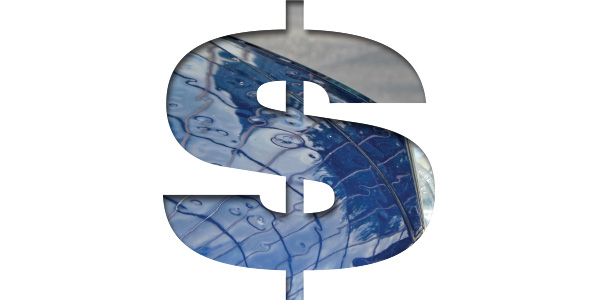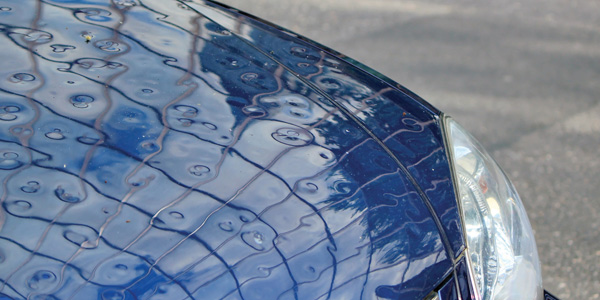
“Dingmen” have been around since the invention of the automobile. Before the automobile, metal imperfections were being repaired using straight-line reflection. The first paintless dent repair (PDR) technicians were used on major auto manufacturers’ assembly lines. They were the last to inspect body panels and used basic tools to press out damage and tap down any bumped-out high areas that occurred during assembly. Flash forward to the 1980s.
Big Money
Rumors abounded about the big money being made by traveling hail PDR technicians. As a result, the PDR industry began a rapid growth that’s in full swing today.
I have been a PDR technician since October of 1991. I think the PDR industry is coming out of its awkward stage and will become a major player in how claims are handled by insurance companies and manufacturers in the future. The hail damage market has already been impacted mightily. Claims for hail losses are written PDR first. If you live in an area affected by hail, you know this to be true.
New Techniques
Many PDR companies are pushing the envelope with the size and severity of repairs. New adhesives in glue-pulling and new tool lines are helping to usher in techniques that can be used to save panels from replacement. There was a time that the average PDR technician with the average skill set would never be able to do larger, complex repairs. But the PDR industry is making major strides in viability and usefulness.
Advantages
I own a PDR-first body shop. We don’t own a frame machine. If a vehicle has been in a hard collision, we refer it out. We stay involved with the repairs for the benefit of our valued customers.
How do we stay involved? In some cases, a vehicle in a hard collision has panel damage that can be minimized or shrunk back so that a blend panel can be saved from refinish and all the labor of the removal and installation. We recently had a customer bring in a claim for a bed replacement on a newer pickup, and we were able to save the original part and convert the part price to labor. With PDR, we were able to work the damage to a point where it took six hours of body labor to finish out the repairs.

So you may be wondering what the gist of this is. PDR is faster, less expensive and saves an original OEM part on a customer’s vehicle. Every original part that can be saved on a vehicle helps maintain the vehicle’s overall value. And less time in the shop not waiting on a part is less liability for the shop storing a vehicle.
OE Certification
All of these examples are fine and good, but here’s the kicker.
Vehicle manufacturers are moving toward certifying shops to repair their vehicles. It’s tough for smaller shops to purchase specific equipment to meet the requirements of these certification programs. What’s your plan? You may have a heavy-volume shop and already be making plans for the upcoming changes. Or you may be waiting to see what happens.
My opinion is that there is a time coming where you will be able to do structural certified repairs or cosmetic, less-involved repairs using time- and money-saving techniques for your customers. And I believe you can do both, but utilizing the right PDR technician will be key. You may be surprised at what your current PDR tech can repair and save a panel from replacement. Using PDR to shrink back damage to save blending into the next panel can be a game-changer for any shop’s bottom line.
Parts Hangers
Times are changing. Considering certification, none of us know for sure how all of this is going to shake out in the end. I do know that exploring your options and direction can help.
I’ve read quite a few industry articles that have said that the collision industry has gotten away from metal repair and has become an industry of part hangers. Maybe it’s time to look back to reflect on when repair techniques were utilized to save a little here and a little there. A dedicated group of people in the PDR industry have been developing and creating ways to do just this.
These techniques I’m talking about are not going to be used on every job, but what if it was on 20 percent of the jobs coming through your shop? Converting parts into labor is a higher profit margin. Not waiting on a back-ordered part you can save with advanced PDR techniques just makes sense. Not having to warranty a blend panel you saved from refinish is just a no-brainer.
How do you go about doing this? Talk with a couple different PDR vendors. Some of them do bigger repairs for their customers, so maybe they’ll be able to point you in the right direction if they don’t feel comfortable with larger repairs.
Here to Stay
PDR is here to stay. All aspects of the automotive field are in one way or another involved with PDR. Manufacturers are changing the rules of how heavy repairs are going to be completed. Embracing the old-school metal finishing techniques can be a boost to your bottom line. Finding the right PDR people to work with can be difficult, but the goal of this article is to get some conversations started now.
A change in thinking can be hard, but in my opinion it’s well-worth the advantage of rethinking your approach to all repairs coming through your shops. Knowing how to price PDR and utilize it can help you in your business on a larger scale.













